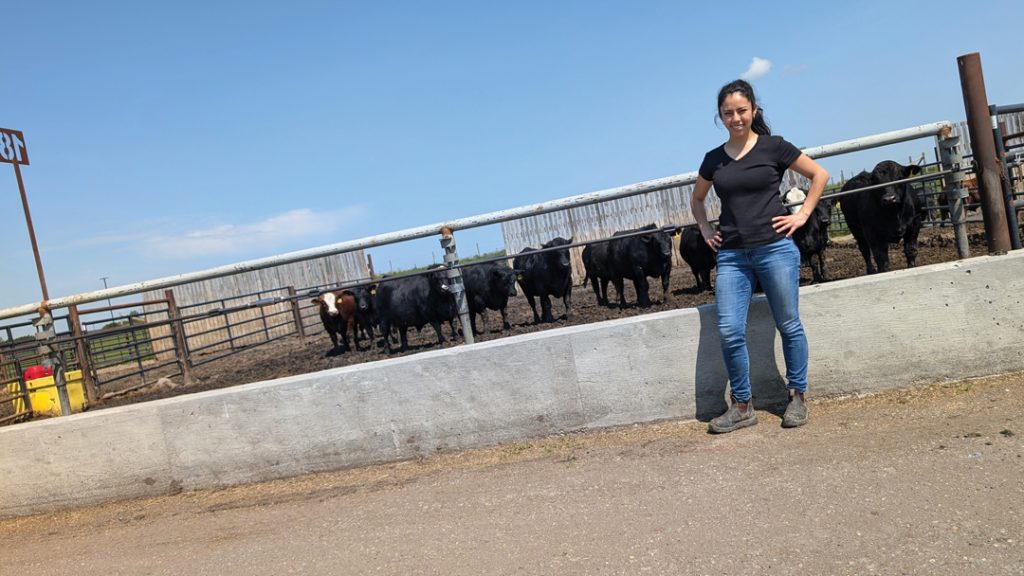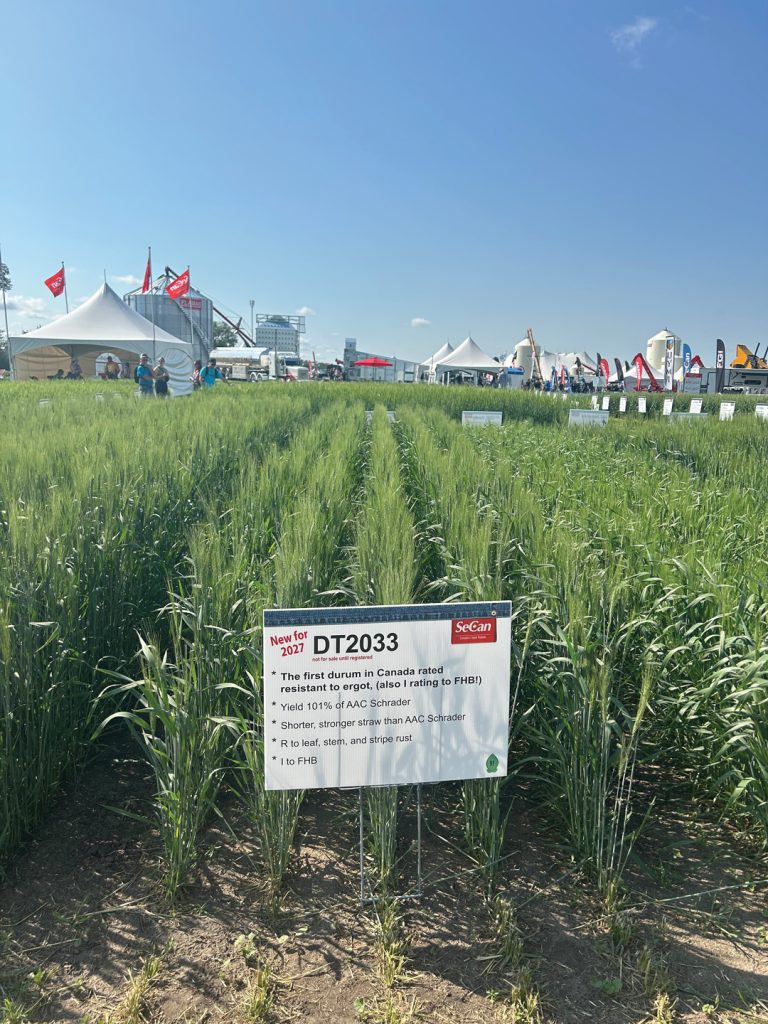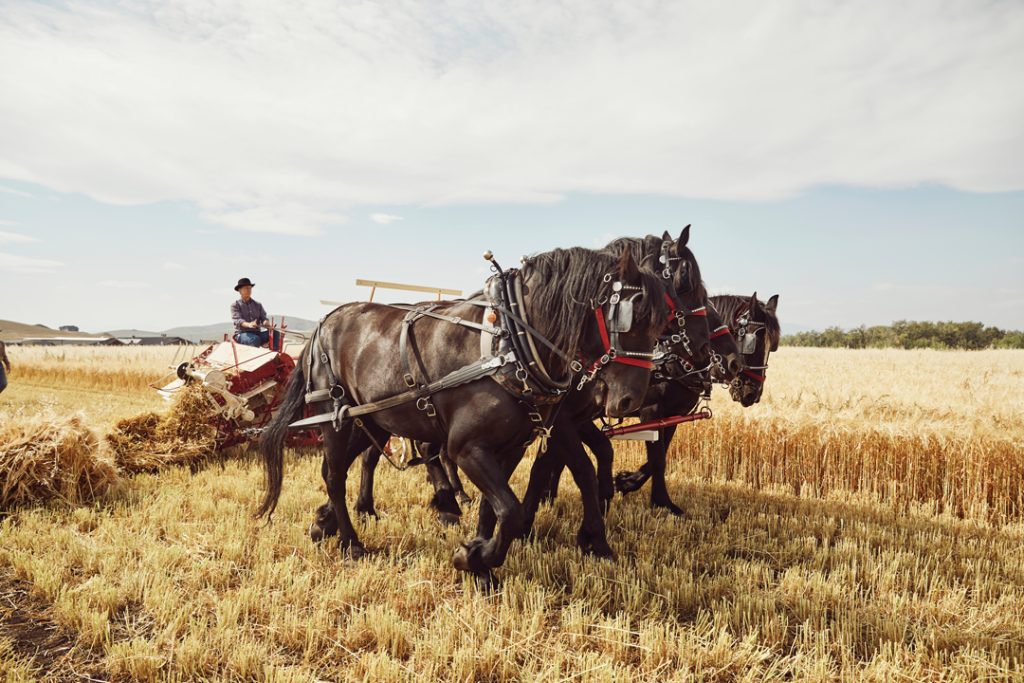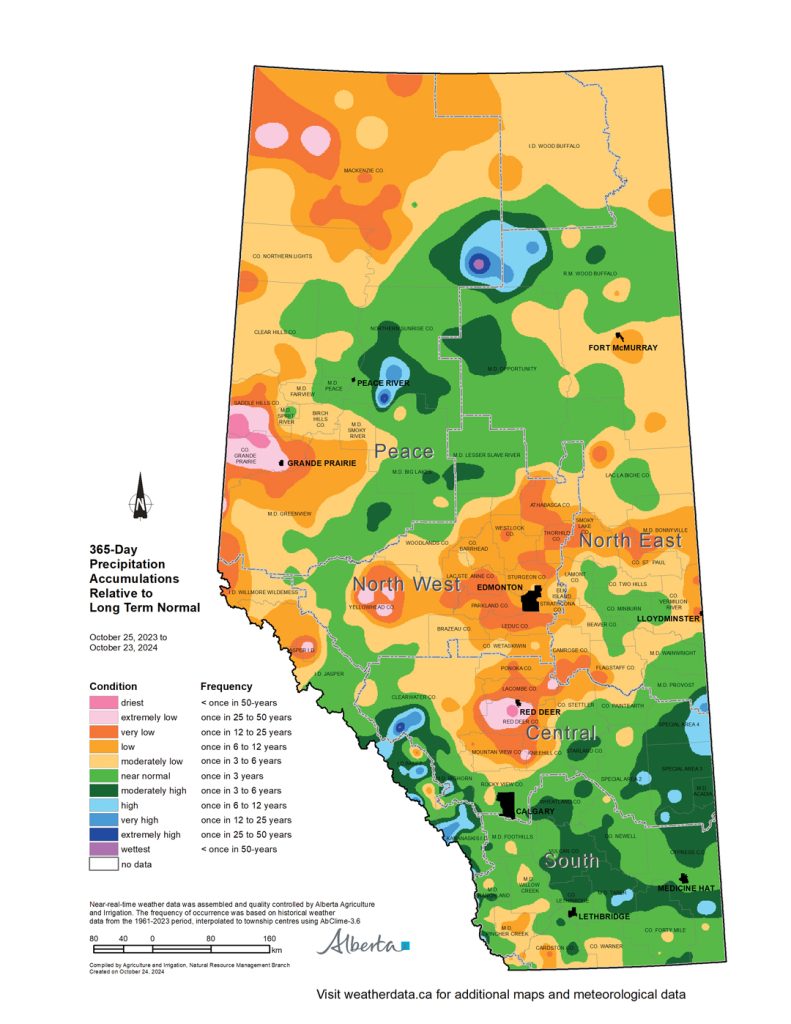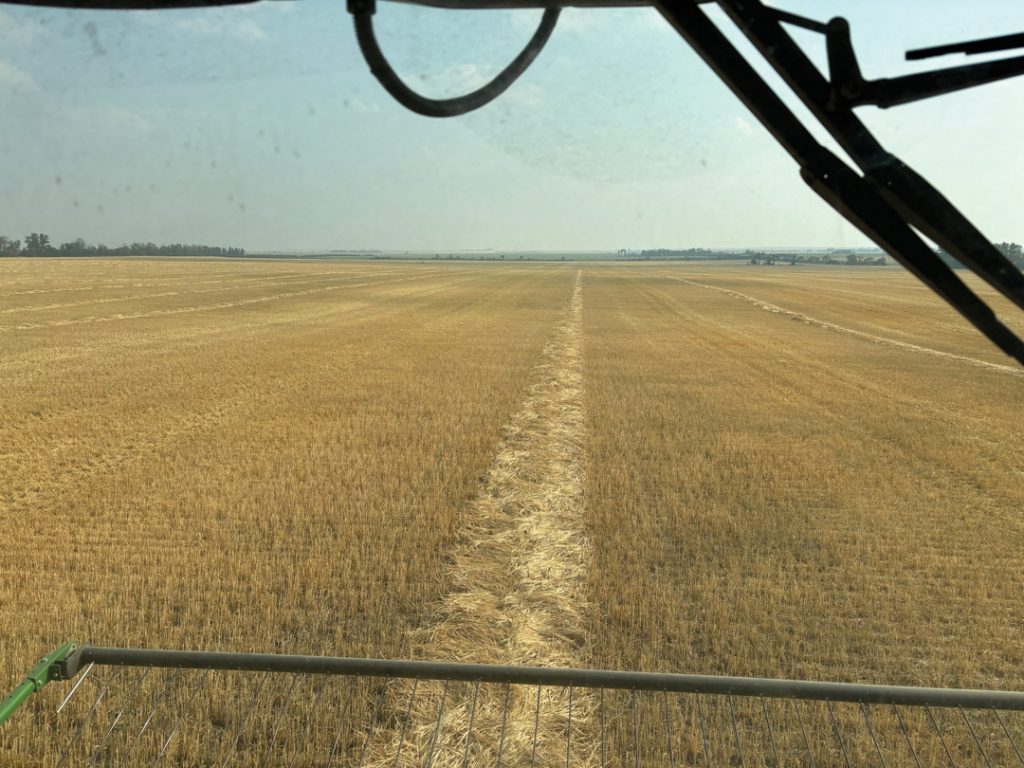A DROUGHT-PROOF CATTLE DIET
University of Saskatchewan master’s student Beatriz Montenegro is searching for economical feed options for cattle that are heavy on nutrition and low on water. Supported by the Government of Saskatchewan’s Agricultural Development Fund, her research aims to help farmers maintain high-quality beef production as feed availability fluctuates.




